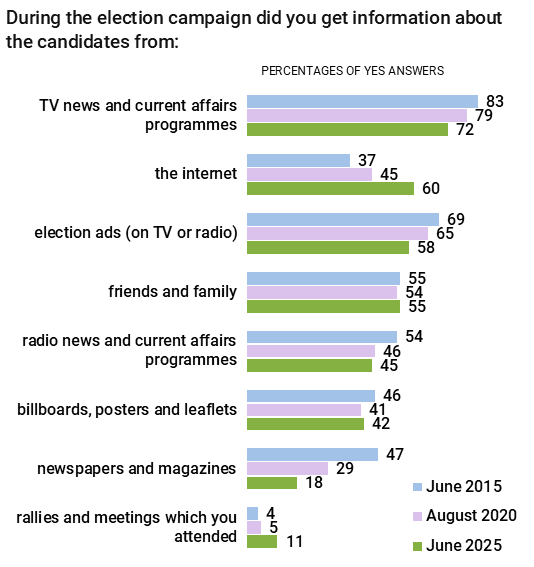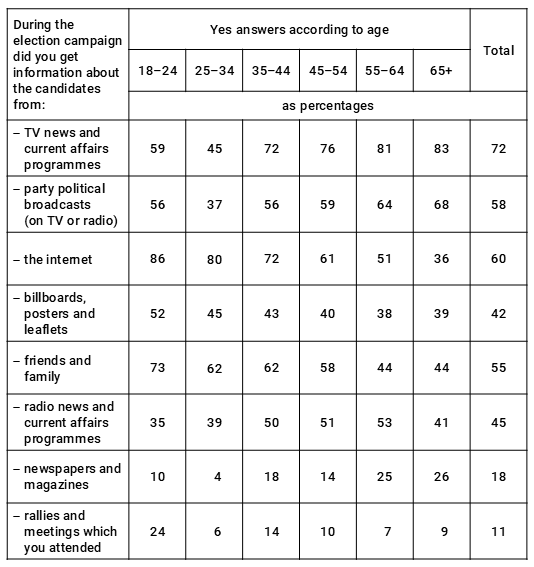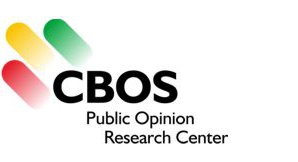16/2025
2025-07-08
Online and Traditional Media in the Election Campaign
When comparing data from previous presidential elections in 2020 and 2015 with current results, the record number of people reaching for online sources of information clearly shows how the political significance of the internet has grown. Unsurprisingly, there has been a concurrent decline in the importance of the traditional media: television, radio and the press. At the same time, this election campaign has seen more emphasis than previously given to meetings and rallies. The exchange of political information with friends and family has remained relatively stable, as has the acquiring of information from posters, leaflets and billboards.

|
The way the people surveyed got information about the election mostly depended on their age. The internet was the main source of political information for respondents under 35, while over-55s pointed to TV more frequently than the average. This was also the case for the press. Interestingly, the youngest respondents (in the 18-24 age group) were more likely than the others to gain information about the candidates from conversations with friends and family or from attendance at meetings and rallies.

|
More on this subject in the CBOS report.
This ‘Current Events and Problems’ survey (422) was conducted using a mixed-mode procedure on a representative sample of named adult residents of Poland, randomly selected from the National Identity Number (PESEL) register. Respondents independently selected one of the following methods: Computer Assisted Personal Interview (CAPI); Computer Assisted Telephone Interview (CATI), respondents receiving researchers’ telephone numbers in an introductory letter from CBOS; Computer Assisted Web Interview (CAWI), where respondents filled in the online questionnaire independently, gaining access by means of a login and password provided in an introductory letter from CBOS. In all three cases the questionnaire had the same structure and comprised the same questions. The survey was carried out between 5 –15 June 2025 inclusive on a sample of 971 people (63% using the CAPI method, 24% CATI and 13% CAWI). CBOS has been conducting statutory research using the above procedure since May 2020, stating in each case the percentage of personal, telephone and internet interviews.





